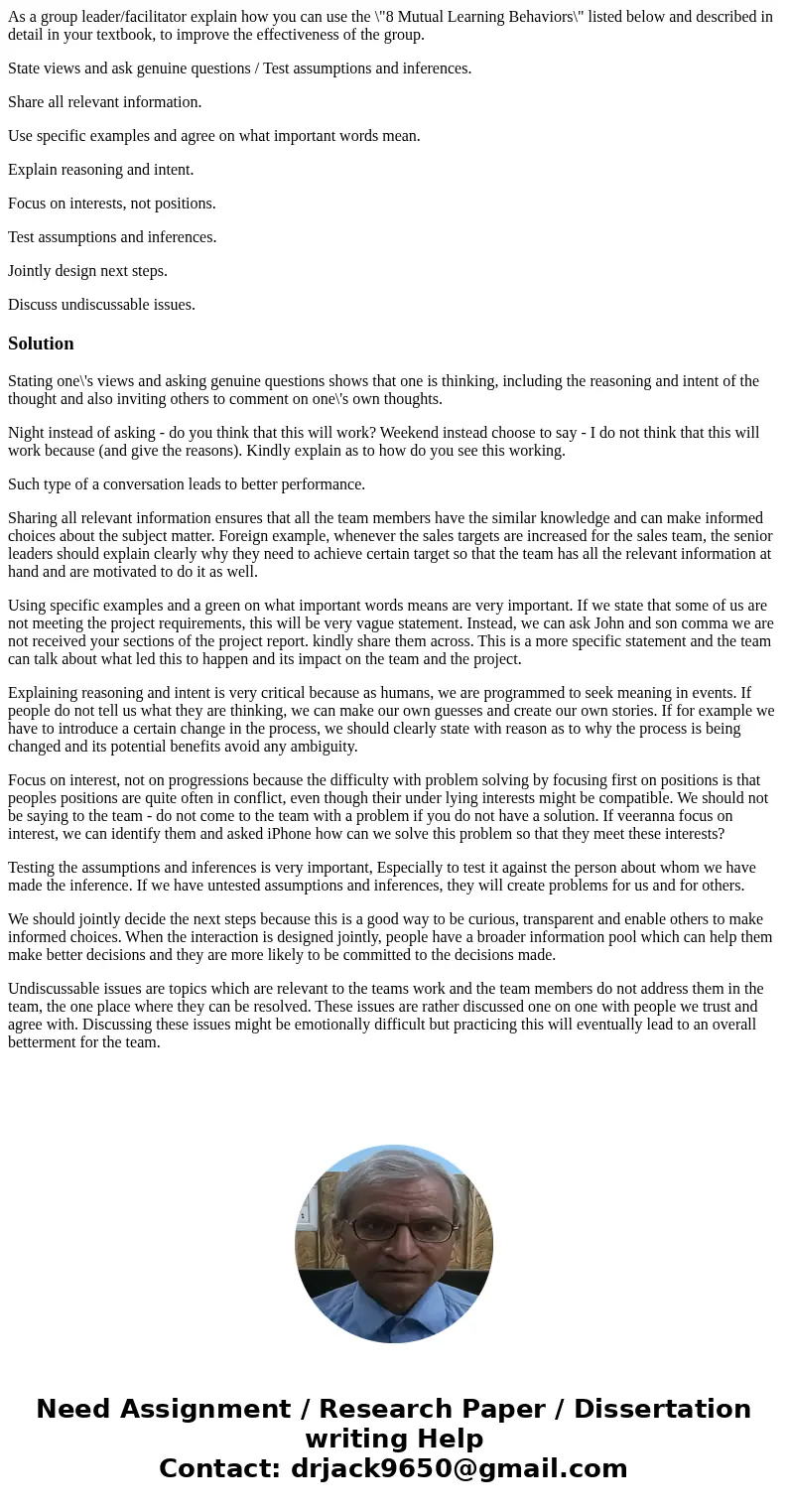As a group leaderfacilitator explain how you can use the 8 M
As a group leader/facilitator explain how you can use the \"8 Mutual Learning Behaviors\" listed below and described in detail in your textbook, to improve the effectiveness of the group.
State views and ask genuine questions / Test assumptions and inferences.
Share all relevant information.
Use specific examples and agree on what important words mean.
Explain reasoning and intent.
Focus on interests, not positions.
Test assumptions and inferences.
Jointly design next steps.
Discuss undiscussable issues.
Solution
Stating one\'s views and asking genuine questions shows that one is thinking, including the reasoning and intent of the thought and also inviting others to comment on one\'s own thoughts.
Night instead of asking - do you think that this will work? Weekend instead choose to say - I do not think that this will work because (and give the reasons). Kindly explain as to how do you see this working.
Such type of a conversation leads to better performance.
Sharing all relevant information ensures that all the team members have the similar knowledge and can make informed choices about the subject matter. Foreign example, whenever the sales targets are increased for the sales team, the senior leaders should explain clearly why they need to achieve certain target so that the team has all the relevant information at hand and are motivated to do it as well.
Using specific examples and a green on what important words means are very important. If we state that some of us are not meeting the project requirements, this will be very vague statement. Instead, we can ask John and son comma we are not received your sections of the project report. kindly share them across. This is a more specific statement and the team can talk about what led this to happen and its impact on the team and the project.
Explaining reasoning and intent is very critical because as humans, we are programmed to seek meaning in events. If people do not tell us what they are thinking, we can make our own guesses and create our own stories. If for example we have to introduce a certain change in the process, we should clearly state with reason as to why the process is being changed and its potential benefits avoid any ambiguity.
Focus on interest, not on progressions because the difficulty with problem solving by focusing first on positions is that peoples positions are quite often in conflict, even though their under lying interests might be compatible. We should not be saying to the team - do not come to the team with a problem if you do not have a solution. If veeranna focus on interest, we can identify them and asked iPhone how can we solve this problem so that they meet these interests?
Testing the assumptions and inferences is very important, Especially to test it against the person about whom we have made the inference. If we have untested assumptions and inferences, they will create problems for us and for others.
We should jointly decide the next steps because this is a good way to be curious, transparent and enable others to make informed choices. When the interaction is designed jointly, people have a broader information pool which can help them make better decisions and they are more likely to be committed to the decisions made.
Undiscussable issues are topics which are relevant to the teams work and the team members do not address them in the team, the one place where they can be resolved. These issues are rather discussed one on one with people we trust and agree with. Discussing these issues might be emotionally difficult but practicing this will eventually lead to an overall betterment for the team.

 Homework Sourse
Homework Sourse